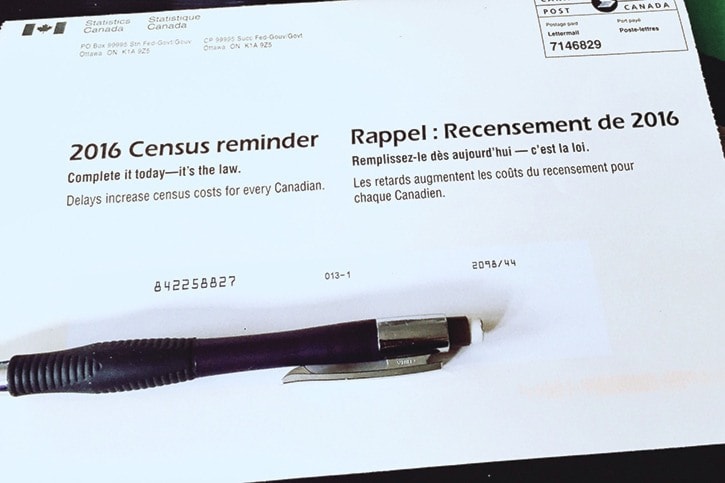The new 2016 census numbers are out and figures show Surrey’s population is now at 518,000.
It’s just under what city planners have estimated – 525,000.
The City of White Rock – which has a 2016 population of 19,952, a 3.2 per cent increase from 19,339 in 2011 – is listed as having B.C.’s fifth most dense populations, at 3,893.1 people per square kilometre.
By contrast, Surrey’s population density is listed at 1,636.8
The City of Surrey has traditionally viewed census Canada statistics as being significantly lower than actual figures, in part because not everyone fills out the census and many homes with secondary suites may not even receive them.
Surrey Mayor Linda Hepner noted Wednesday that the census tallies are usually dated by the time they come out and that she’s relieved this year to see the figures closer to city estimates than in the past .
“We have often gone by the provincial numbers because the national numbers are either an undercount or are so far out of date because (the count) wasn’t happening as often,” she said.
Census Canada estimates that Surrey has grown by 10.6 per cent between 2011 and 2016, a jump from 468,250 to 517,887.
Hepner said she is looking forward to seeing more detailed information from the national census, such as household incomes, education and multicultural make-up.
“That information used to come out well after the population number itself,” Hepner said. “Hopefully that shifts as well.”
Information about the city’s demographics has been crucial in creating some of Surrey’s economic development strategies, Hepner said, and she’s pleased to see the return of the long-form census, which will provides detailed information.
In all, the Lower Mainland has grown by 6.6 per cent to 2.8 million people from 2011 to 2016.
The Greater Vancouver Regional District saw an increase of 150,103, while the Fraser Valley Regional District saw a growth of 18,341.
According to Urban Futures executive director Andrew Ramlo, the province is continuing to see concentrated population growth in the Lower Mainland.
“Greater Vancouver counts for just over 50 per cent of the provincial population but it accounted for just over 60 per cent of the population growth (and) the Fraser Valley grew faster even than Greater Vancouver,” Ramlo said.
Canada’s population, meanwhile, has surpassed 35 million, with the bulk of that five-per-cent growth attributed to immigrants.
As of 2016, 13.6 per cent of Canadians live in B.C., the third largest province in the country.
Since 2011, the biggest percentage jumps were seen in Whistler, Squamish and Langley. Whistler grew by 20.7 per cent to 11,854, Squamish by 13.7 per cent to 19,512 and Langley by 12.6 per cent to 117,285.
Vancouver and Surrey remain the most populace cities in the area as of 2016. (Vancouver grew by 4.6 per cent to 631,486.)
Vancouver has the highest population density in all of Canada with 5,400 people per square kilometre. New Westminster, North Vancouver, Victoria and White Rock are the next four.
Density in Vancouver is only going to increase, Ramlo notes, as detached-home neighbourhoods add coach houses and convert to duplexes.
The only city to show negative growth was West Vancouver, which reduced by 0.5 per cent.
- with files from Katya Slepian
